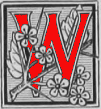
indsor has become the generic name for chairs and seats with turned spindles socketed into solid wooden seats to form the legs and backs. The name has been traced back to I728, when a Windsor chair was included in a sale catalogue. In England and America the two main types, the hoop back and the comb back, were developed during the eighteenth and early nineteenth centuries with many regional variations of the basic form, and the Windsor chair survived the transition from production by hand to mechanical production without injury to the character of its design. High Wycombe in Buckinghamshire was the chief centre of manufacture, and the term “White Wycombe” was uscd as a description of a Wycombe turned or Windsor chair, “in the white," that is unstained and unpolished. These “White Wycombes” were stacked on farm wagons, and hawked through the Midlands, sales being made for a few shillings a chair from door to door in villages and the new suburbs of o!d towns. Such chairs represented an authentic “cottage” style, and their merits were not recognised until late in the Victorian period, when new versions of that style followed the handicraft revival. [56-57]
References
Gloag, John. Victorian Comfort: A Social History of Design, 1830-1900. A. C. Black, 1961. (Reprinted 1973 by David and Charles, Newton Abbot.)
Last modified 11 August 2016